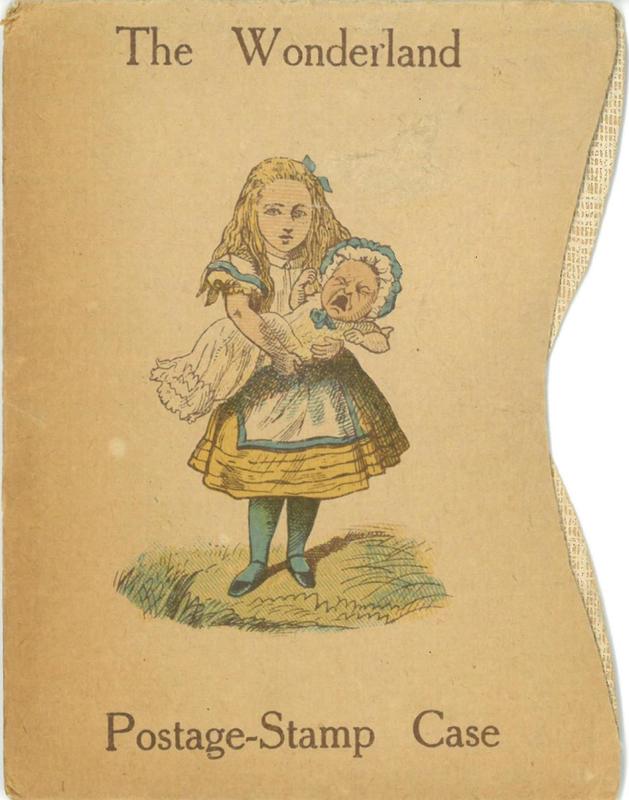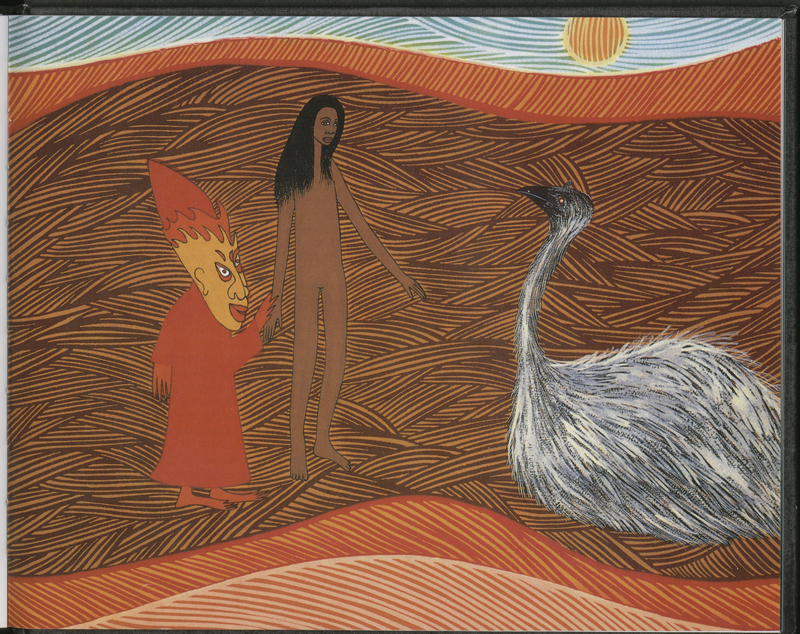Interpretive Translation
Lewis Carroll’s Alice is unmistakably rooted in the trappings of upper-middle-class Victorian England, with its tea parties, croquet matches, and recitation of improving poetry. That provincialism makes the book’s enduring appeal across ages, classes, and cultures all the more surprising. Issues of cultural as well as linguistic translation have led many translators to combine translation with adaptation in an effort to anchor elements of the original in more relevant local practice.
Nancy Sheppard’s Alitji in Dreamland (facing pages 84 and 85 shown here), is a retelling of the Alice story set in Aboriginal Australia. The White Rabbit becomes a White Kangaroo and the Red Queen is a witch spirit. Sheppard’s translation presents English and Pitjnatatjare Aboriginal texts side-by-side. Sheppard’s version opens with Alice and her sister playing an Aboriginal storytelling game involving pebbles and various Australian animals and mythological characters are integrated into the story as Alice follows the White Kangaroo on her somatic adventures.
Lewis Carroll. Nancy Sheppard (translator and adaptor). Byron S. Sewell (illustrator)
Alitjinya ngura tjukurtjarangka = Alitji in the dreamtime
Adelaide: Dept. of Adult Education, University of Adelaide. Hatcher Graduate Library

Interpretive Illustrations

Alice Products: The Wonderland Postage-Stamp Case


